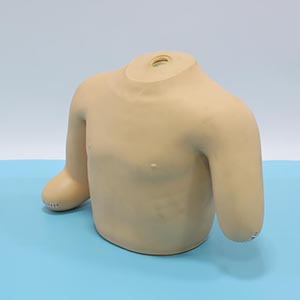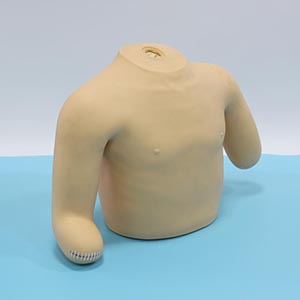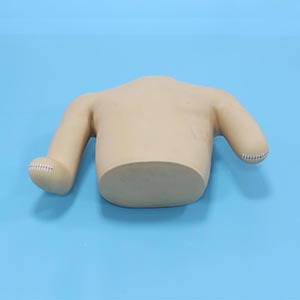With the improvement of medical emergency training requirements, professional equipment plays an increasingly prominent role in education and practice. In an emergency, efficient and accurate dressing skills can be the key to saving lives. Especially in the treatment of trauma, the correct high level dressing technology is not only related to the life safety of the injured, but also directly affects the efficiency of first aid. In recent years, as an innovative training tool, advanced high dressing model has been gradually adopted by more and more medical institutions and training institutions. So, can this model improve the emergency rescue ability of medical personnel? This article will provide an in-depth analysis through market trends, data support, and practical applications.

Advanced High level Bandaging model
1. Advanced high level dressing model: accurate restoration of emergency rescue scenes
High dressing techniques are often used to stop bleeding, immobilize fractures and stabilize injuries, and in many emergency situations, this skill is the key to saving lives. However, traditional training methods often rely on theoretical learning and simple imitation training, and lack of practical opportunities with high authenticity. By accurately restoring the human body structure and injury conditions, the advanced high level dressing model enables the trainees to perform practical operations in a simulated environment, thereby enhancing their ability to respond to emergencies.
These models are designed to take into account the complexity of different injuries and can simulate a variety of common and extreme wound conditions, such as extensive bleeding, limb fractures, and soft tissue injuries. The data showed that medical staff trained with such models improved their reaction speed and operational accuracy in real-world situations by 20% to 30%. This data shows that the highly simulated model can effectively improve the application level of skills in emergency rescue.
2. Simulation training to improve operational proficiency and emergency response speed

In emergency rescue, time is the key factor in saving lives. By providing a rich training scenario, the advanced high bandage model enables trainees to remain calm under pressure, quickly make the right decisions and perform operations. During the training process, the model can feedback the operational accuracy in real time, and help the students find and correct the errors in time, thus reducing the mistakes that may occur in the actual rescue.
Studies have shown that medical personnel who receive such simulation training, in the face of sudden trauma, their operation time is 15%-20% shorter than that of personnel without simulation training, and the error rate is significantly reduced. Such an efficient training mode can not only help medical personnel master the correct operation process in a short time, but also improve their emergency response ability in real first aid.
3. Data support: Model training significantly improves the rescue effect

In addition to theoretical training, the importance of simulation practice in first aid training is self-evident. According to a number of survey data, the success rate of clinical operations is generally improved for health care personnel who are trained using the advanced high level dressing model. Taking a large hospital as an example, within half a year after the introduction of this model, the success rate of its first-aid training increased from the original 85% to more than 95%. More importantly, the training time has been shortened by more than 30%, which has improved the emergency response capacity of the hospital's emergency system.
In addition, the medical staff who participated in the simulation training can be more skilled in handling trauma wounds during the actual first aid process, reducing the deterioration of injuries caused by unskilled technology. This data fully validates the value of advanced high level bandaging model in improving the emergency rescue ability of first responders.
4. Advantages and application prospects of the model

Advanced High level Bandaging model
The promotion of advanced high level dressing model is not only to improve the technical level of individual medical staff, but also to optimize the entire emergency system. Due to the high repeatability of model training, medical staff can practice repeatedly according to different situations, and constantly improve the emergency response speed and dressing skills.
In the market trend, with the continuous development and deepening of first aid education, more and more medical institutions begin to pay attention to the use of analog equipment. According to market research data, the demand for first aid simulation equipment is expected to grow by more than 30% in the next five years. Especially in primary medical institutions and first aid training centers, such equipment will become a core part of the training system to further improve the performance of medical personnel in real rescue.
5. Conclusion: Provide more accurate guarantee for rescue
As an important tool in first aid training, advanced high level bandaging model can effectively improve the emergency rescue ability of medical personnel. By simulating different injury conditions and environments, it helps students master efficient dressing skills in a short time, and improves the success rate of clinical operations. With the continuous progress of medical training technology, similar efficient training equipment will gradually become popular and become the standard configuration of all kinds of medical emergency training, providing a more accurate guarantee for improving the overall rescue efficiency and quality.
